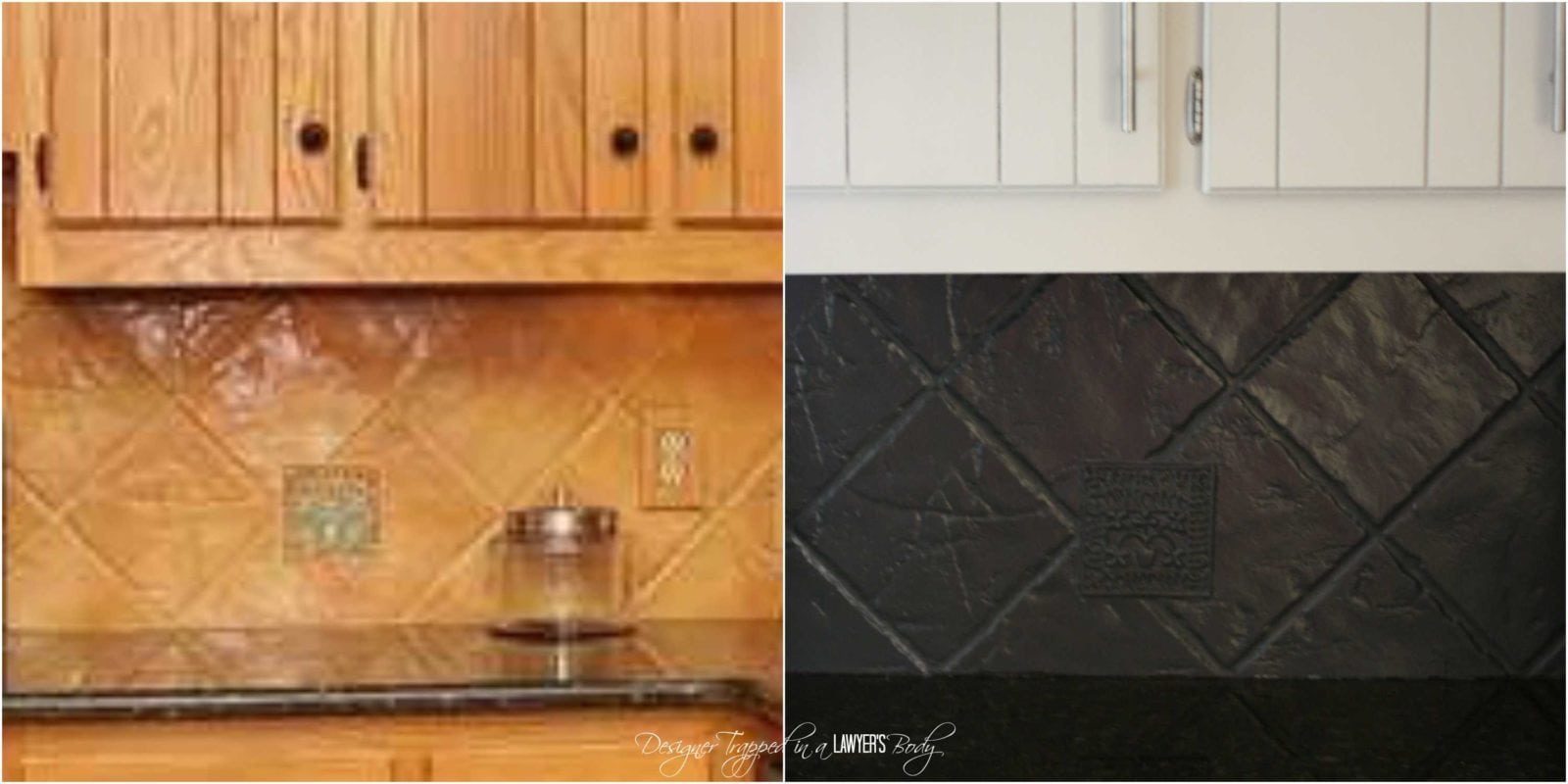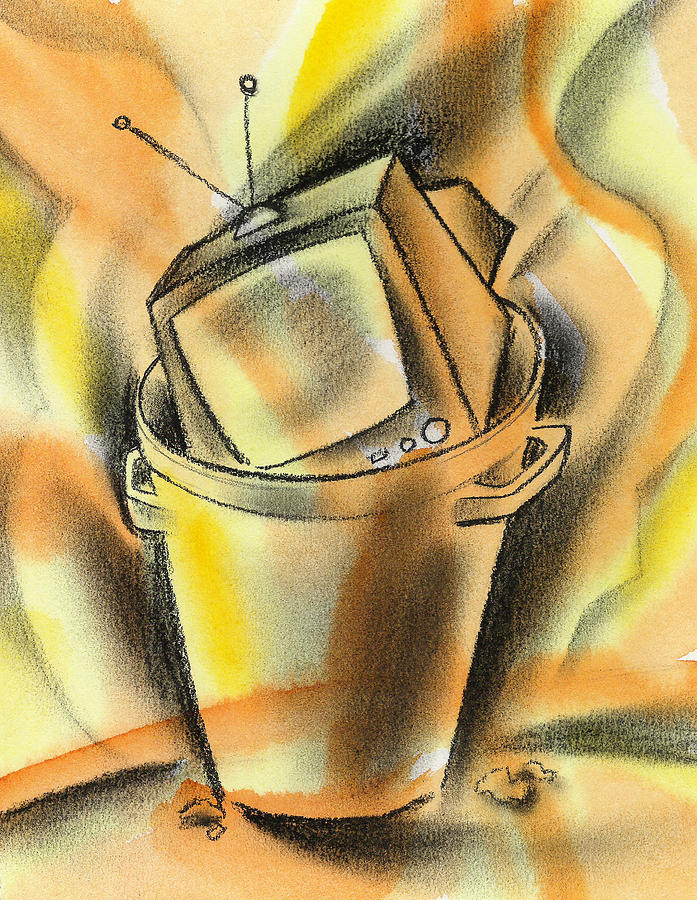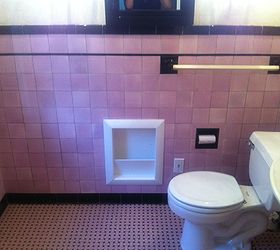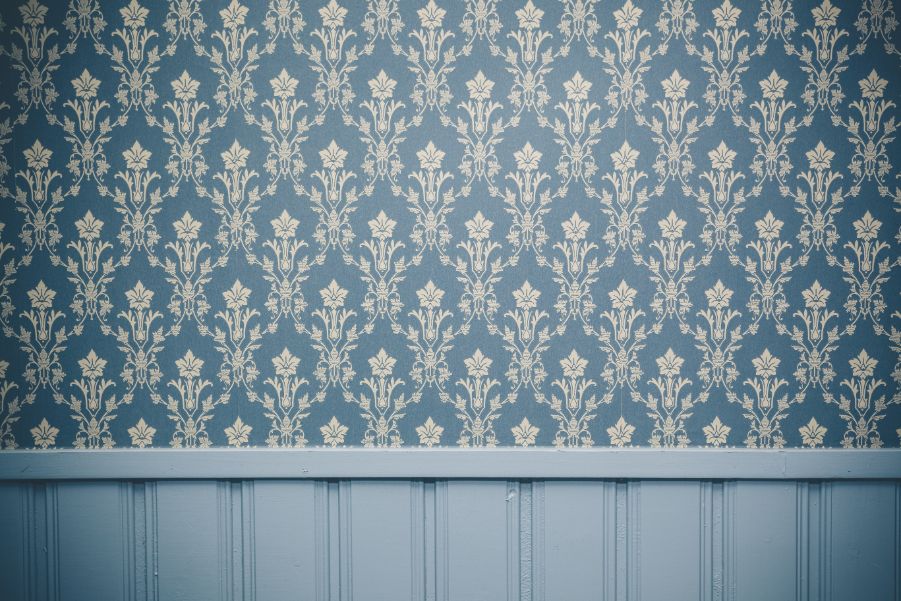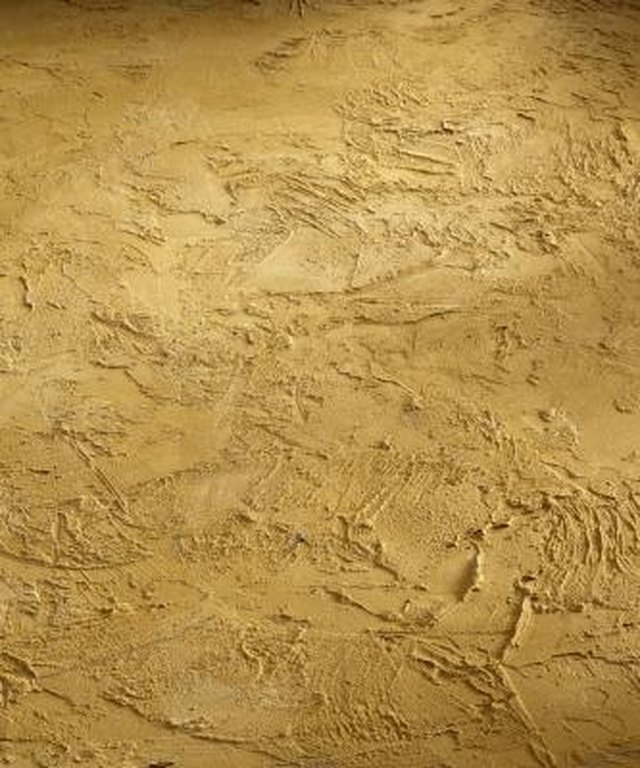When you're starting a paint project you once again have a few options. If this is the case, you can usually sand down the paint on the car, smoothly and evenly, and paint over it using most of today's modern paints. Don't forget that some new cars get damaged and spot-painted—sometimes even body-worked—at the dealer before being sold.
Hopefully such work has been done properly, with good catalyzed paints, primers, and sealers. If so, it can be painted over like the rest of the car. If not, you probably won't know it until it wrinkles or lifts while you're painting the car. So some painters suggest not stripping the vehicle to bare metal (especially inside-and-out, as in immersion stripping), so that you don't remove these tough factory undercoats.
It pertains to older vehicles, or ones that you know have been damaged and bodyworked. If the surface is shiny and fresh, and you want to repaint it, I can only assume you just bought the car and paid for a paint job you didn't want. Don't compound the issue by immediately stripping this paint off only to find what you consider to be an excessive amount of filler underneath. Lots of good paint jobs, even by big-name builders, have filler under them. It's the most expedient way to get a super-straight show-winning body and paint job. But the majority of these cars are stripped to bare metal to begin with, metal-worked pretty close, and then the filler and other undercoats are added properly.
If you strip all this off, you're just erasing several man-hours of work that have to be repeated, either by you or someone you'll have to pay big bucks by the hour. If somebody has already spent a lot of time bodyworking, priming, and sanding the car, you'd be nuts to strip all that out and do it over again, right? Now, if there's rust under there, or the filler's an inch thick, it's a different story.
The body needs stripping to start, and more work after that. The second—and usually better—option is to thoroughly sand whatever paint is on the car, then cover it with a good sealer followed by a modern catalyzed primer. However, most cars needing a paint job also have dings, door dents, scrapes, or other surface problems that won't simply sand out.
If the paint on the car is multilayer, old, or otherwise edgy, give yourself extra insurance and add a coat of sealer before the primer. Then you can use some catalyzed spot putty where necessary over the primer and start block sanding, as we detail in following chapters. Most of my early paint problems, when painting over existing finishes without stripping, occurred because I was using lacquer primer and lacquer paint.
For both of these reasons, modern paints really are better, especially if you're spraying it over existing paint. If you plan to strip paint from the car's bodywork, use 1,200-grit paper or sanding pads to quickly remove the clear-coat and paint. To avoid the headache of trying to match the paint you want to apply to the existing paint on the car, you'll need to remove the primer and expose the bare metal. The paint on older cars may be incompatible with modern water based paints and gel coats.
Better to be safe than sorry – do it right and do it once. The better your starting surface, the less trouble that you'll have going from dark to light. Start by cleaning off your walls, since both dust and dirt can get in the way of an effective paint job. To make it easy, use a long dry dusting mop and wipe vertically along the entire surface of the wall.
Any tougher to remove stains can be taken care of using a clean rag, some warm water, and gentle dish soap. As mentioned above, you'll also want to repair any imperfections in the drywall. If you use a fast-drying spackle, wait about two hours before sanding and putting on your first coat of primer . A standard spackle will require about 24 hours to harden before you sand. Always choose a high-quality automotive primer that's developed for use on metal surfaces, and make sure the area you plan to paint is cleaned thoroughly before you start.
Typically, you should apply two or more coats of primer to ensure the bare metal is completely covered. If you're painting plastic, you'll need a specific plastic primer. To know how to repaint interior walls with a similar colour of paint, you'll still need to prepare the surface. Once the surface is clean and dry, apply high-quality primer from the Haymes Ultra-Premium Prep Coat range with a paintbrush and roller.
Our preparation products have been developed to mask any imperfections and to provide a smooth and consistent base for coloured paint so you may only need to apply one coat. After priming the wood, the next step is to paint it. Grab a fresh foam roller and apply at least three coats of either latex or oil-based paint. Latex paint is preferred for cabinets and doors because it doesn't leave an odor behind when you're done. Oil-based paint is great for high traffic areas like decks and porches because it lasts longer and offers maximum protection. Make sure to allow six hours of drying time in between coats of paint.
Do I Need To Remove Old Paint Before Painting Wall During this time, inspect the wood for any clumped leftover paint residue that needs to be removed with a tack cloth before the paint dries completely. Smoothing walls before painting is necessary for surfaces previously painted with a gloss or high-gloss paint. For previously painted water-based paint, sand with a fine-grit sandpaper. For oil-based paint, a medium-grit sandpaper (100- to 150-grit) should be used. Again, wipe away any debris and allow to dry completely. As a general rule, it is possible to paint over already painted wood without sanding it first if the surface is not damaged or the previous paint job is not peeling or chipping off.
Simply prepare the surface by applying a high adhesion primer. Once the primer has fully dried apply the paint. To repaint a wall in a different colour, it's essential to take the time to prepare the surface. Once the surface is dry and clean, it's a good idea to use Haymes Ultra-Premium Prep Coat range if the colour change is significant, such as changing from a white to a dark blue. This range of products ensures you'll only need to use two coats of paint to cover the previous colour.
Lightly sand the frame with 150 grit sandpaper, or if the frame is already varnished, an 80 grit sandpaper. Remember, you're just roughing up the wood for painting. If you don't add the primer or undercoat – primer goes on bare wood, whereas undercoats go on wood with a finish – won't stick to it. In conclusion, yes you can paint over painted furniture at your own discretion. Keep in mind that your paint will only stick to the paint that is on the furniture. If the existing paint is peeling and chipping off you may need to remove it before repainting.
Repainting painted furniture can be great to change your furniture as your decor changes. This repainted painted table is ready to head back home again. This is probably the easiest surface to paint onto.
All you need to do, is apply a primer and undercoat with a roller to create the best surface. If you don't prime the surface with sealer, the plaster will soak up any paint like a sponge, so you'll waste a lot and end up doing more coats than you'll need. Allow all bare or new plaster to dry completely before decorating. You'll know it's dry when any dark patches shrink away, or it turns a light pink/grey colour. Let's look at some examples that do need stripping.
In this case the car obviously has been repainted, probably fairly recently. However, both the top layer and one or more underlying layers are split and peeling up. We don't know exactly why, but something was not done properly during some stage of the preparation for this paint job, and that stage—filler, primer, whatever—is not adhering. I would strip this car to bare metal, by any method, before repainting it. In such cases I suggest not stripping the car because most types of stripping either remove existing filler, or "infect" it with chemicals so it must be removed. Opinions differ on this issue, but I think it's smarter to be an optimist.
Given that you've checked carefully for any real gremlins, and the body looks good the way it is, sand it down and repaint it. Even if it's a little wavy, do your block sanding on what's already there, if it's a stable surface. Add some high-fill primer or spot putty, as needed.
But consider yourself lucky you didn't have to go through the major job of stripping and a bunch of arduous bodywork. Chalk paint adheres to furniture beautifully without the use of primer and no sanding. With that being said, there's very rarely a piece of furniture that goes through our shop that doesn't need some type of prep work before paint. Because when you're working with used furniture, it's typically been loved on for quite a few years. It's scratched and peeling and dirty, and if you just whip out a brush and start painting, you probably won't end up with the best results. So we decided to put together a list of things to look for before you start painting furniture pieces and how to fix them.
If you're repainting an area, the first thing to do is assess the paint condition of the surface. If the paint is peeling, you must scrape it to remove old paint coats. Afterward, the surface will need to be smoothed with 180 grit sandpaper to create a smoother surface. Never attempt to paint an existing wood surface without preparing its surface. Applying a direct coat of paint over the old coating will not work and eventually will tend to peel, especially if it has a glossy finish.
If your bed frame is in good condition, you can prepare it with a deglosser instead of sanding it. A deglosser, also known as 'liquid sandpaper, is a chemical solution that removes the layer of gloss from a furniture item so you can start painting it. However, if there are any dents or holes in the frame, it's better to sand down the frame and repair it than get some deglosser on it. If the frame is flat, not shiny, and you're not going to paint it a drastically different colour, you can skip the sanding, priming and deglossing and get on with the painting.
Before repainting, use a primer to create a barrier between the old coat of paint and your new color. Another benefit of priming is that it creates a porous surface that gives the wall a more finished look. Avoid choosing paints with built-in primer, as they are not effective on a wall with the old color. Such products may work if you are painting the same color but if you are making a dramatic color change, a good oil-based primer is important. In the old days, "Metalprep" was recommended on bare metal to remove any minor rust, to clean any oils or other contaminants, and to etch the surface for improved paint adhesion.
Today 2-part etching primer/sealers (such as PPG's DP series) are so good they are usually applied directly to bare metal, first thing. I typically use my HomeRight Paint Sprayer when painting almost any project, primer included. If the surface still has extensive rust after all loose rust has been removed, start with Krylon® Rust Protector™ Rust Converting Primer or Krylon® Rust Tough® Rust Fix.
This primer chemically changes rust into a waterproof, paintable surface. Spray directly over the remaining rust to protect against further corrosion. Apply multiple thin coats to prevent runs and drips. This primer sprays on clear and dries to a black primer finish. After 24 hours, topcoat with your choice of paint color. Surface can be sanded lightly before applying topcoat, if desired.
Since most paints are now water based, you have to make sure that the surface you paint is not hydrophobic, so any greasy or silicone spots must be gone. Paint only sticks to the surface right under it. So if that layer is in bad shape and starts flaking or loosening, your new coat comes off with it. That is one reason of sanding, to discover those weak spots that you will over look with quickly wiping a rag over a piece. However, sanding, by creating micro grooves in the surface, most of all increases the contact area with the paint, creating a much stronger bond. To remove the sealant layer on your chalk-painted piece, you must first give the project a thorough clean.
You'll then need to scuff and sand the piece with 120-grit sandpaper until you can no longer see or feel the smooth and shiny top layer. This will once again open the pores of the chalk paint, and your piece will be ready for priming and repainting. Dents, small holes (nail holes, etc.) and deeper scratches can be filled in with spackling compound. Use a piece of fine-grit sandpaper and lightly smooth the surface around the area to be repaired.
This will help to remove any fragments or raised portions of the wall. Next, open a container of premixed spackling compound and scoop up a small amount of it with the edge of a putty knife. Put the compound-covered blade of the putty knife at a 45-degree angle to the wall and spread the compound over the hole or crack in a smooth, feathering motion. Scrape away excess compound from the wall with your putty knife with the blade at a 90-degree angle to the wall. Wipe any remaining excess with a damp cloth before it sets. It will take a few hours for the patch to properly set.
If the patch is slightly raised from the rest of the surface, lightly sand it again with fine-grit sandpaper. As a Whole painting over already painted wood is possible by preparing the surface with a high adhesion primer first. Then simply paint the prepared surface with either latex-based paint, oil-based paint, or chalk paint. If the surface of the wood is too uneven then some sanding might be necessary. While in many cases just one coat of primer will do, that's not the case when you're going dark to light. Expect that you'll need at least two coats of primer, and don't forget to let each coat dry fully before moving on.
Don't worry if you can see a bit of muted color bleeding through since primer isn't meant to provide a completely saturated cover. Any cracked, flaking or peeling areas need to be lightly sanded or scraped before applying new primer and paint because the weight of the new coat will pull the old paint loose. "You'll just end up wasting your time and money if you don't tackle that first," says Tom Lee, Senior VP of Consumer Marketing for Behr. Greasy spots may also need a bit of washing with soap, followed by a rinse with clean water. Otherwise, wipe down with a damp cloth so that paint will have a clean, dust-free surface to stick to.
1) Liquid Sander Deglosser is great for really slick surfaces and supper easy to use. Your paint will go a lot further if you use this product first over high gloss surfaces. It allows you to get more coverage in your first coat of paint by giving the surface some "tooth". So, instead of a third or maybe even four coats of paint, you can usually paint the normal two coats and maybe even just one coat. You just saturate a terry cloth towel or rag and wipe over the surface. It dries in 10 minutes or less and you are ready to paint.
